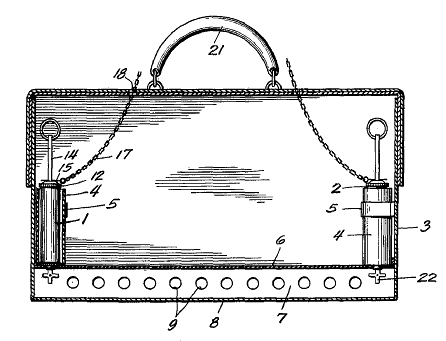Paris witnessed a startling demonstration in 1824: a machine that could simulate a musical improvisation, producing endless variations on a given theme. “Its ingenious inventor, M. Winkel, of Amsterdam, has given it the astonishing faculty of imitating extemporaneous performance, and of reducing into harmonic form all the possible combinations, which the most bold and fertile imagination could produce,” noted the Harmonicon. When Winkel operated the Componium before an audience of skeptical musicians, it “produced upon the auditory an effect difficult to be described. The astonishment of the hearers was at its height when, after having executed a march, with variations by Moscheles, the instrument was left to follow its own inspirations: the applause was loud and unanimous, and some exclaimed that it was altogether miraculous.”
Incredulous that such an effect could be produced by an automaton, the attendees asked two of their number to examine the mechanism and make a final report. These two declared that, while the effect was “marvelous,” no trickery was involved:
When this instrument has received a varied theme, which the inventor has had time to fix by a process of his own, it decomposes the variations of itself, and reproduces their different parts in all the orders of possible permutation, the same as the most capricious imagination might do; it forms successions of sound so diversified, and produced by a principle so arbitrary, that even the person the best acquainted with the mechanical construction of the instrument, is unable to foresee at any given moment the chords that are about to be produced.
A single example will suffice to show the freedom of choice that is permitted by it. None of the airs which it varies lasts above a minute; could it be supposed that but one of these airs was played without interruption, yet, through the principle of variability which it possesses, it might, without ever resuming precisely the same combination, continue to play not only during years and ages, but during so immense a series of ages that, though figures might be brought to express them, common language could not.
— J.B. Biot, de l’Academie des Sciences, and Catel, de l’Academie des Beaux-arts, Paris, Feb. 2, 1824
But a dazzling effect can be produced by a relatively simple mechanism. In 1770 an English publisher produced a pamphlet with the intriguing title A Tabular System Whereby the Art of Composing Minuets Is Made So Easy That Any Person, Without the Least Knowledge of Musick, May Compose Ten Thousand, All Different, and in the Most Pleasing and Correct Manner. A contemporary reviewer found that “a quantity of cards, each holding a sequence of notes and arranged at will, is the whole secret of so prolific a composition.”










